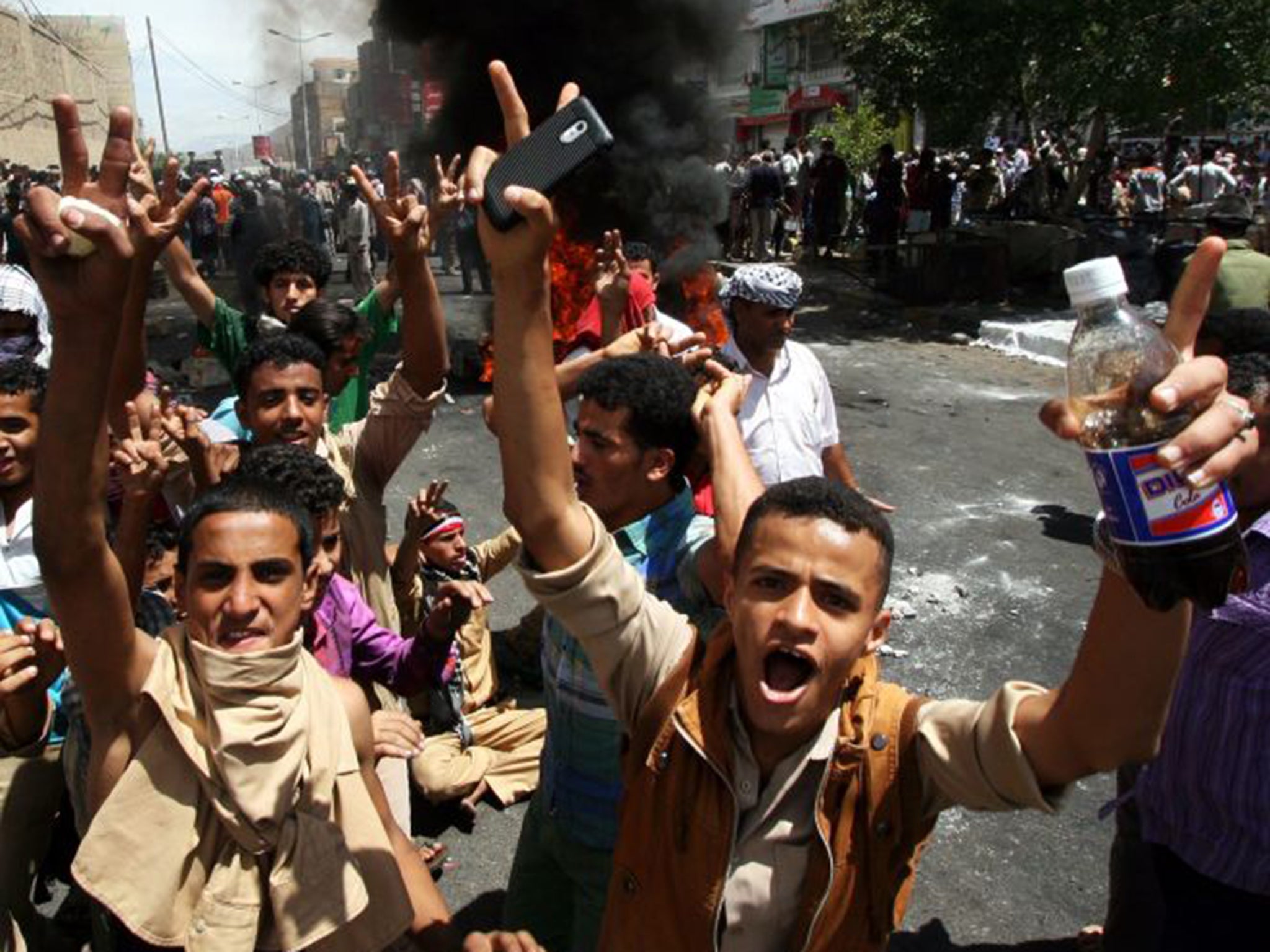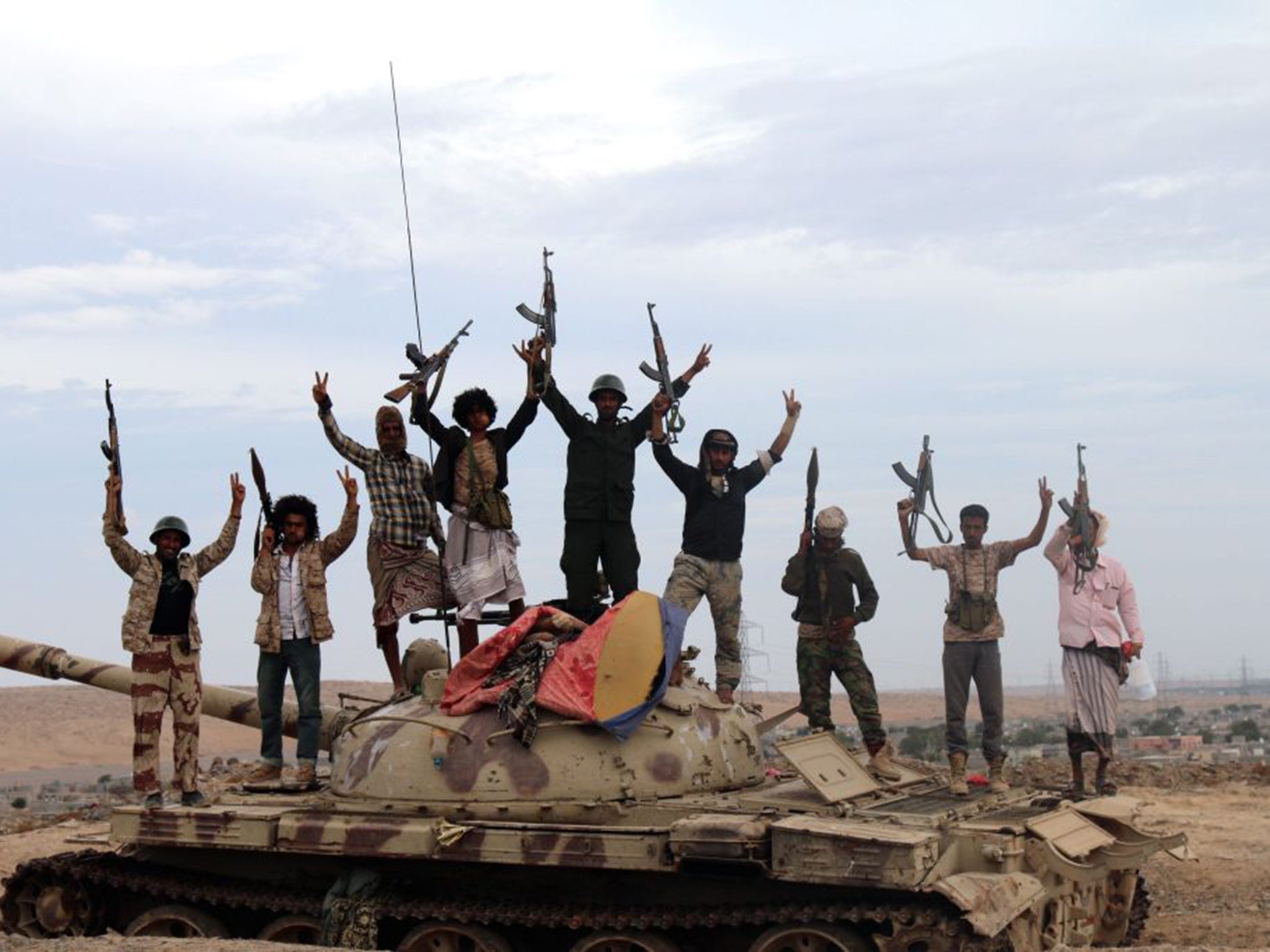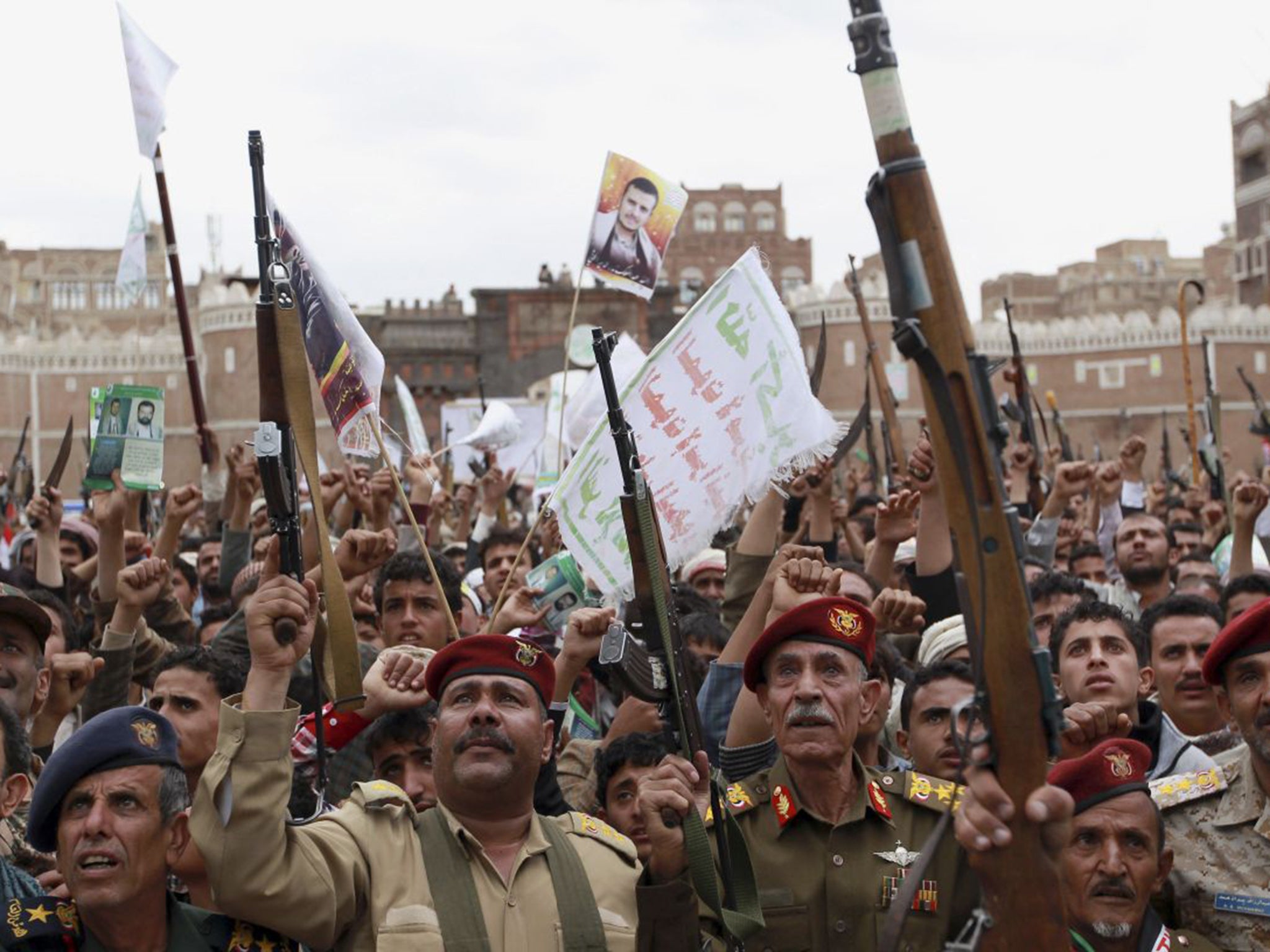Saudi Arabia's airstrikes in Yemen are fuelling the Gulf's fire
World View: Arab intervention in Yemen risks entrenching Sunni-Shia divide and handing a victory to Isis


Foreign states that go to war in Yemen usually come to regret it. The Saudi-led military intervention so far involves only air strikes, but a ground assault may follow. The code name for the action is Operation Decisive Storm, which is probably an indication of what Saudi Arabia and its allies would like to happen in Yemen, rather than what will actually occur.
In practice, a decisive outcome is the least likely prospect for Yemen, just as it has long been in Iraq and Afghanistan. A political feature common to all three countries is that power is divided between so many players it is impossible to defeat or placate them all for very long. Saudi Arabia is backing President Abd-Rabbu Mansour Hadi but the humiliating speed of his defeat shows his lack of organised support.

The threat of further intervention by Saudi Arabia and the Gulf Cooperation Council may be intended to redress the balance of power in Yemen and prevent the Houthis winning a total victory. But Saudi actions and those of the Sunni coalition will be self-fulfilling if the Houthis – never previously full proxies of Iran – find themselves fighting a war in which they are dependent on Iranian financial, political and military backing.
Likewise, the Houthis, as members of the Zaidi sect, were not always seen by Shia in other countries as part of their religious community. But by leading a Sunni coalition Saudi Arabia will internationalise the Yemen conflict and emphasise its sectarian Sunni-Shia dimension.
The US position becomes even more convoluted. Washington had sought to portray its campaign in Yemen against al-Qaeda in the Arabian Peninsula (AQAP) as a success. Drone attacks were supposedly wiping out important AQAP operatives, but the humiliating end result of America’s covert war in Yemen came last week when US Special Operations personnel blew up their heavy equipment and fled the country for the US base at Djibouti. AQAP is becoming a stronger force as the shock troops of the Sunni.
US policy across the Middle East looks contradictory. It is supporting Sunni powers and opposing Iranian allies in Yemen but doing the reverse in Iraq. On Thursday US aircraft for the first time started pounding Islamic State (Isis) positions in Tikrit, 87 miles north of Baghdad. The city has been under assault for four weeks, with 20,000 Shia militia and 3,000 Iraqi soldiers pitted against a few hundred Isis fighters. The Shia militiamen are now reported to have withdrawn but they do not appear to have gone far. Effectively, the battle for Tikrit is being waged by Iranian-directed Shia militia backed by US air power, even if the two sides are rivals as well as allies.
Ultimately, the US may not have much choice. If it refuses to back anti-Islamic State combatants for whatever reason it will be to the benefit of Isis. The numbers tell the story: there are between 100,000 and 120,000 Shia militiamen in Iraq compared with only 12 brigades in the Iraqi army capable of fighting, about 48,000 soldiers, although this total may be inflated. Isis has been conscripting young men across its self-declared caliphate since last October and may have over 100,000 fighters. If the US relies on Iraqi government and Kurdish Peshmerga ground forces alone to put Isis out of business, it will be difficult.
Why did the US finally use its air power at Tikrit, formerly a city of 200,000? First, it was the only help the Baghdad government formally asked for this week. The US may have concluded, as it did with the 134-day siege of the town of Kobani last year, that it could not allow Isis to succeed in Tikrit. Second, if the city did fall, Washington did not want Iran and the Shia militia to get all the credit.
A further motive is that both the US and Iran want to restore some credibility to the Iraqi government and army after their crushing defeats by Isis forces last year. So far the Iraqi army has not recaptured a single city or substantial town from Isis since the fall of Fallujah, 40 miles west of Baghdad in January 2014. Such limited military successes as there have been were won by the militias in the provinces neighbouring Baghdad.
The US-led international coalition opposing Isis also needs to do something to bolster its own credibility. Despite some 2,500 coalition air strike launched against it since last August, the Islamic State has lost little territory. Isis may be battered but it shows no signs of being anywhere near to defeat.

The Independent conducted a series of interviews in February and March with people who had recently left Isis and, while none were sympathetic to it, there was nobody who believed it was going to be destroyed by mounting internal discontent or external military pressure. A prime reason for this is that the Sunni Arab communities in Iraq and Syria are not being offered an acceptable alternative to Isis rule. They are all terrified of becoming the victims of a pogrom that does not distinguish between Isis supporters and ordinary Sunni.
A further feature of life in the Isis caliphate that emerged from these interviews is that it is well organised: it taxes salaries and sales, it conscripts young men of military age, controls education and mercilessly strikes down any opponents. Its stability might be shaken if it suffered a string of military defeats but so far this has not happened.
Air strikes have made it revert to semi-guerrilla tactics, not holding ground against superior forces backed by airpower but counter-attacking briskly when they have moved on or their lines of communication have become longer and more vulnerable. Given the difficulty in capturing Tikrit, it does not look as if an assault on Mosul will be possible for a long time. There seems to be no enthusiasm on the government side retake Fallujah, although it is so much closer to the capital.
Whatever happens in Iraq and Yemen, the political temperature of the region is getting hotter by the day. Looked at from a Saudi and Gulf monarchy point of view, Iran and the Shia are on the advance, becoming either the dominant or the most powerful influence in four Arab capitals: Baghdad, Damascus, Beirut and Sanaa. The Sunni Arabs in Iraq and Syria have linked their futures inextricably and fatally to Isis and other al-Qaeda type organisations. These have military strength, but they make many powerful enemies.
The confrontations between Sunni and Shia, and between Saudi Arabia and its allies and Iran and its allies, is becoming deeper and more militarised. Conflicts cross-infect and exacerbate each other, preventing solutions to individual issues. Thus Saudi intervention in Yemen reduces the chance of a US-Iranian agreement on Tehran’s nuclear programme and sanctions. As these conflicts and divisions spread, the chances of creating a common front that is capable of destroying the Islamic State are getting fewer by the day.
Join our commenting forum
Join thought-provoking conversations, follow other Independent readers and see their replies
Comments